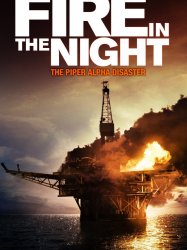Sludge est un film américain de genre Documentaire
Sludge (2005)

Si vous aimez ce film, faites-le savoir !
- Infos
- Casting
- Infos techniques
- Photos
- Vidéos
- Passages TV
- Citations
- Personnages
- Musique
- Récompenses
OrigineEtats-Unis
Genres Documentaire
Sludge is a 2005 documentary film by Appalshop filmmaker Robert Salyer chronicling the Martin County Sludge Spill that was an accident that occurred after midnight on October 11, 2000 when a coal sludge impoundment in Martin County, Kentucky, broke through an underground mine below, propelling 306 million gallons of sludge down two tributaries of the Tug Fork River. The movie documents the continuing story of the Martin County disaster, the resulting federal investigation, and the looming threat of coal sludge ponds throughout the coalfield region.
In the United States today, coal is the largest single source of fuel for energy production. Annually, the country mines over a billion tons of coal. Coal waste is a consequence of this consumption; the Mine Safety and Health Administration has estimated that there are over 235 sludge ponds throughout the region with the potential to break into an underground mine, as the Martin County pond did in 2000.
In the wake of the December 2008 release of coal ash at a Tennessee Valley Authority power plant, Appalshop provided a web stream of Sludge for the public [1] for a limited time.
Commentaires
Postez un commentaire :
Suggestions de films similaires à Sludge
Il y a 8962 ayant les mêmes genres cinématographiques, 4640 films qui ont les mêmes thèmes (dont 1 films qui ont les mêmes 6 thèmes que Sludge), pour avoir au final 70 suggestions de films similaires.Si vous avez aimé Sludge, vous aimerez sûrement les films similaires suivants :
 , 40minutes
, 40minutesOrigine Etats-Unis
Genres Documentaire
Thèmes L'environnement, Documentaire sur le monde des affaires, Documentaire sur l'environnement, Documentaire historique, Documentaire sur les technologies, Film catastrophe
Note57%






Le Pic-vert russe (2015)
, 1h20Origine Etats-Unis
Genres Documentaire, Historique
Thèmes L'environnement, Documentaire sur l'environnement, Documentaire historique, Documentaire sur le nucléaire, Documentaire sur les technologies, Film catastrophe
Note66%





Le jeune artiste ukrainien Fedor Alexandrovitch et le réalisateur Chad Gracia enquêtent sur la catastrophe de Tchernobyl : et si ce n'était pas un accident ?

Cultures en transition (2012)
, 1h5Origine France
Genres Documentaire
Thèmes L'environnement, La mondialisation, Le monde du travail, Documentaire sur le monde des affaires, Documentaire sur l'environnement, Documentaire sur les technologies, Documentaire sur le monde du travail, Film catastrophe
Note75%





Le film met en garde contre les dangers contre les dépendances en agriculture d'intrants chimiques et de ressources énergétiques. Le film décrit des alternatives agricoles en France, le mouvement des Villes en transition et le changement de paradigme agricole à Cuba comme des exemples préfigurateurs d'un nouveau mode de production agricole, à petite échelle et décentralisé.

3.11: Surviving Japan (2013)
, 1h30Réalisé par Simon Hilton
Genres Documentaire
Thèmes L'environnement, La mer, Transport, Documentaire sur l'environnement, Documentaire historique, Documentaire sur le nucléaire, Documentaire sur les technologies, Film catastrophe, Catastrophe sismologique
Note81%





The film spans from March 11, 2001 to September 19, 2011, starting with Noland's own experience in the Tōhoku Earthquake and tsunami, Fukushima Daiichi nuclear disaster followed by volunteer activities in Ofunato

My Atomic Aunt (2013)
Genres Documentaire
Thèmes L'environnement, La mer, Transport, Documentaire sur l'environnement, Documentaire historique, Documentaire sur le nucléaire, Documentaire sur les technologies, Film catastrophe, Catastrophe sismologique
Note67%





Surviving the Tsunami brings together social, environmental, and personal perspectives of the national catastrophe of the Fukushima nuclear meltdown. In the documentary, Kyoko Miyake travels back to her hometown in Namie, Fukushima, to revisit her old life and assess the trauma still lingering from the disaster. She revisits Namie, her mother's hometown and meets the people who depended on the success of the nuclear plant for their livelihood. The film also follows Bunsei Watanabe and Kyoko Miyake's Aunt Kuniko, two people who hope for the rejuvenation of Namie, despite the disaster that has occurred. Despite having lost family, friends, and jobs due to the meltdown and subsequent fear of the contamination zone, these two individuals are determined to rebuild their towns and neighborhoods and bring back the sense of community they once had. The film follows the residents of Namie, with emphasis on the experiences of Aunt Kuniko, as they come to terms with the reality of living in or near the "radiation zone" left in the wake the plant's nuclear meltdown. Surviving the Tsunami offers a different perspective on Japanese culture, national identity, human adaption, and global nuclear energy and proliferation.

The Last Mountain (2011)
, 1h35Origine Etats-Unis
Genres Documentaire
Thèmes L'environnement, Documentaire sur le monde des affaires, Documentaire sur l'environnement, Documentaire historique, Documentaire sur la politique, Documentaire sur les technologies, Politique
Note76%






The Unnamed Zone (2006)
, 1h20Réalisé par Carlos Rodríguez
Genres Documentaire
Thèmes L'environnement, Documentaire sur l'environnement, Documentaire historique, Documentaire sur le nucléaire, Documentaire sur les technologies, Film catastrophe
Note63%





The Spanish film crew led by Carlos Rodriguez is following the life stories of three children - Lidia Pidvalna, Anastasia Pavlenko, and Andriy Kovalchuk - whose lives were drastically changed after an explosion at the Chernobyl Nuclear Power Station on April 26, 1986. Through the documentary, the children and their families "living perilously close to the exclusion zone around the destroyed station recount their fears, dreams, fantasies, and hopes for the future." Each child holds a "Chernobyl certificate" which bestows access to government grants and aid and is a gruesome reminder of their existential reality.

Fire in the Night (2013)
, 1h34Origine Royaume-uni
Genres Documentaire
Thèmes L'environnement, La mer, Transport, Documentaire sur l'environnement, Documentaire historique, Documentaire sur les technologies, Film catastrophe, Catastrophe navale
Note75%






The River (1938)
, 31minutesRéalisé par Pare Lorentz
Origine Etats-Unis
Genres Documentaire
Thèmes L'environnement, Documentaire sur le monde des affaires, Documentaire sur l'environnement, Documentaire historique, Film catastrophe
Acteurs Thomas Chalmers
Note63%






Dams: The Lethal Water Bombs (2011)
, 21minutesRéalisé par Sohan Roy
Genres Documentaire
Thèmes L'environnement, Documentaire sur l'environnement, Documentaire historique, Documentaire sur les technologies, Film catastrophe
Note72%





The Banqiao Dam in China, with its 492 million cubic meters of water, has a similar capacity to the Mullaperiyar Dam, with 443 million cubic meters. When it was destroyed by torrential rains in 1975, it claimed the lives of 250,000 people. This documentary is based on the possibility of a similar disaster happening to the Mullaperiyar Dam in India.
 Connexion
Connexion